 Technology peripherals
Technology peripherals
 AI
AI
 When no real person can give you a heartfelt hug, the robot will take action
When no real person can give you a heartfelt hug, the robot will take action
When no real person can give you a heartfelt hug, the robot will take action
Everyone has emo moments, but not everyone can find someone to hug them.
This pain point was also seen by scientist Alexis Block (hereinafter referred to as Block). Since 2017, she has been studying how to teach robots to hug. She later became a member of the famous German "Max Planck School", which has produced 37 Nobel Prize winners.
This project is not that easy. Because they have been making this robot for 6 years, it is not cold, is very human:
- When people approach it, it will raise its arms and ask enthusiastically, "Can I get a hug?";
- It will adjust itself according to the person's height to give a just-right hug. It can also adjust different "squeeze" strengths to make the hug more affectionate;
- It can also respond to different hugging postures: for example, if people want to hold on for a while, it will understand this and not let go of its robotic arm in advance...

How real is this kind of hug? It’s so real that people who participated in the preliminary experiments were not even willing to call it “it”.
What’s even more amazing is that when everyone talked about the feeling of being hugged by the robot, they all had specific responses, such as “hugging a lover”, “a comforting hug from my mother”, and the other person seemed to be “at a funeral” "A distant relative", "a friend seen at a football match", some even said it was like "hugging an ex".
This difference in emotional correspondence is related to people's psychological state at the time, as well as the action and degree of the robot hugging them in each trial.

But this all shows that the HuggieBot 3.0 developed by Max Planck is quite "human-like".
Why does the Max Planck Institute teach robots to hug?
Human beings crave skin-to-skin contact.
Since we were picked up by our parents from infancy, people have begun to have close contact with others. When we are caressed, hugged and massaged, hormones are released, which can greatly relieve stress and anxiety, and reduce heart rate and blood pressure.
Especially a tight hug that lasts for more than three seconds will enhance the pleasure of people's skin contact. This is also called "deep pressure touch".
People "should hug 4 times a day to survive, and hug them at least 8 times to be physically and mentally healthy." Virginia Satir, a well-known American psychotherapist, proposed the "Four Hugs" theory.
But you know, there is not always someone who can accompany you all the time, so you can achieve "deep pressure touch" on your own by wrapping yourself in a quilt.
People hope that technology can fill the void of companionship and comfort.
For example, a team has made an electronic wristband that can receive tactile information: connected to the Bluetooth of a mobile phone, one person clicks to send the information, and the wristband on the other person's hand will squeeze and vibrate.
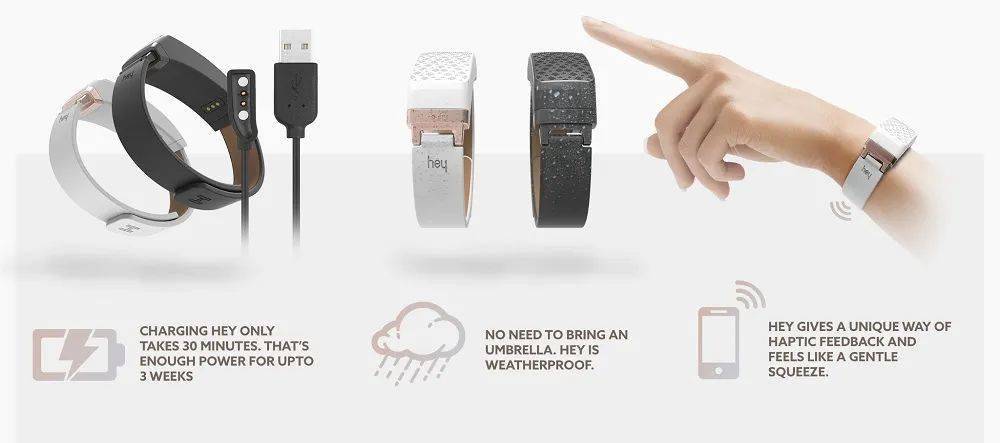
There is also a team that invented "hug shirts". These clothes are embedded with sensors and are used on children with autism spectrum disorders: when a parent hugs a doll at one end, the sensor can capture the position, strength, and temperature of the hug. Even the heartbeat can be felt by the children on the other end in the form of heating, vibration and inflation.
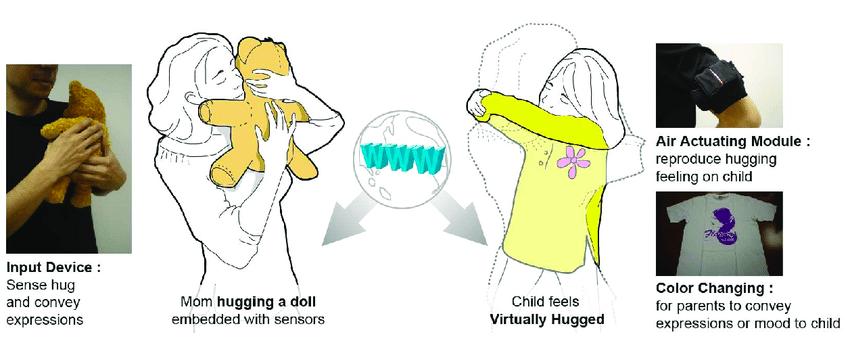
But these are not enough.
The developers of HuggieBot found that people are particularly sensitive to hugs, especially in terms of "touch location" and "contact intensity."
The closer two people are emotionally, the more areas they are allowed to touch, but for people who are not close, hugging them in the wrong position will become "offensive"; in addition, the hug is not strong enough, and it is easy to It seems perfunctory, and using too much force will hurt the person opposite. And the feeling of this intensity needs to vary from person to person.
So inventions like hugging shirts and the like are still unable to restore a warm enough and real hug.
Especially after experiencing the epidemic, people's emotional connections have become more fragile amid distance and obstacles, and they are more eager to embrace. Block, the main founding member of HuggieBot, said that their purpose of developing this robot is to use it to send a highly anthropomorphic warm hug to comfort those who are socially distanced, especially due to the epidemic.
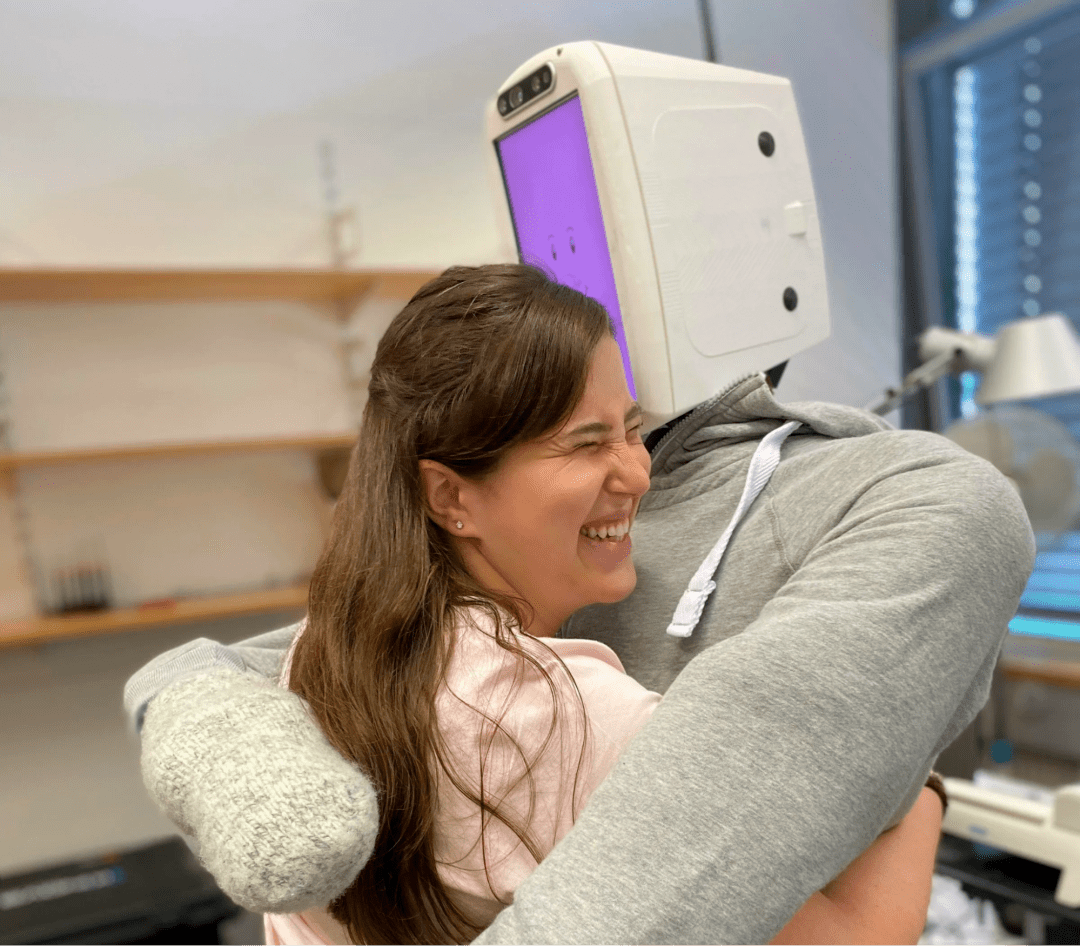
Brock hugging the robot
Giving a "perfect hug" is not easy
How to improve the comfort of hugging? It’s too mysterious to embrace this kind of thing, but scientists still want to quantify it.
In 2017, the team started its initial attempt, making a very crude-looking robot and designing a total of 12 different types of hugs.
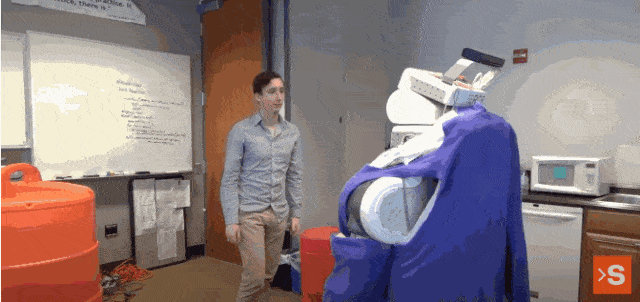
The two arms and torso of the prototype robot are wrapped with thick foam and cotton
Next, they found 30 volunteers and asked the robot to give each person a dozen hugs: the hugs lasted longer or shorter, and the postures were different.
Unexpectedly, even though the robot weighed 450 pounds and was about as tall as a person, no one was oppressed and no one ran away because of fear.
On the contrary, many people said, "I really enjoy hugging the robot, because the experience is novel and not surprising." These positive feedback encouraged Bullock and her team, They even wanted to challenge it "Can a robot give a hug better than a real person?"
So, they first investigated several robots on the market, starting with the earliest (1992) and most famous Temple Grandin extruder.
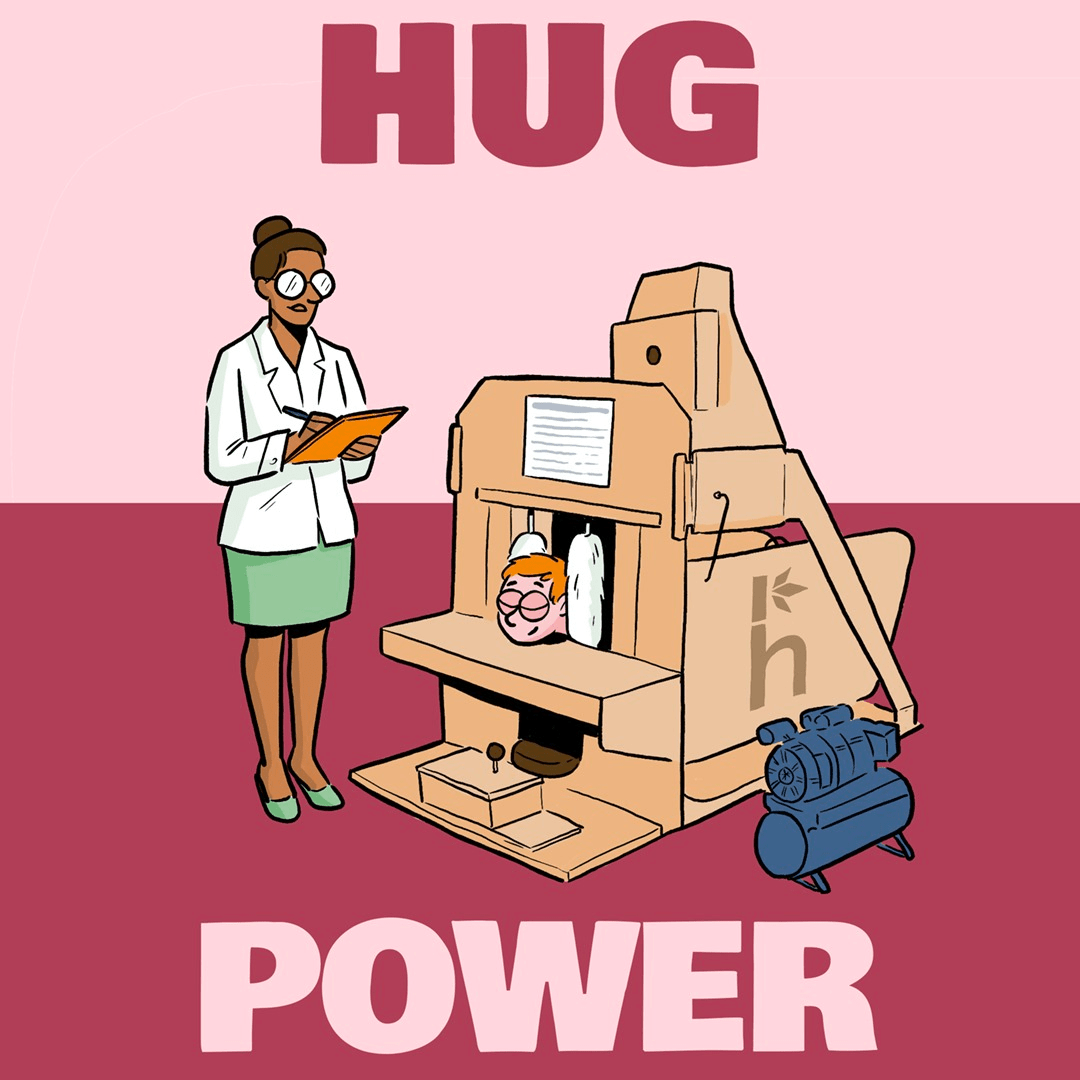
Look, this isn’t even a robot, it’s just a machine. The machine, which creates pressure by squeezing two foam panels to simulate a hug, has been widely used to treat children with autism.
Later, animal-simulating products were derived based on this, but this only made it more "user-friendly".
Based on this, Bullock and the others made the first generation HuggieBot. In addition to wrapping the robot in thick purple cotton, they also used various heating elements to make HuggieBot soft and warm enough.
They also want to take another step forward: making robots more autonomous.
So, they added tactile sensors to the back of the robot. These sensors can be stretched and can detect when the user starts contact and when they want to end the hug, thereby predicting how long and how long the robot should give the user. "Tight" hug.
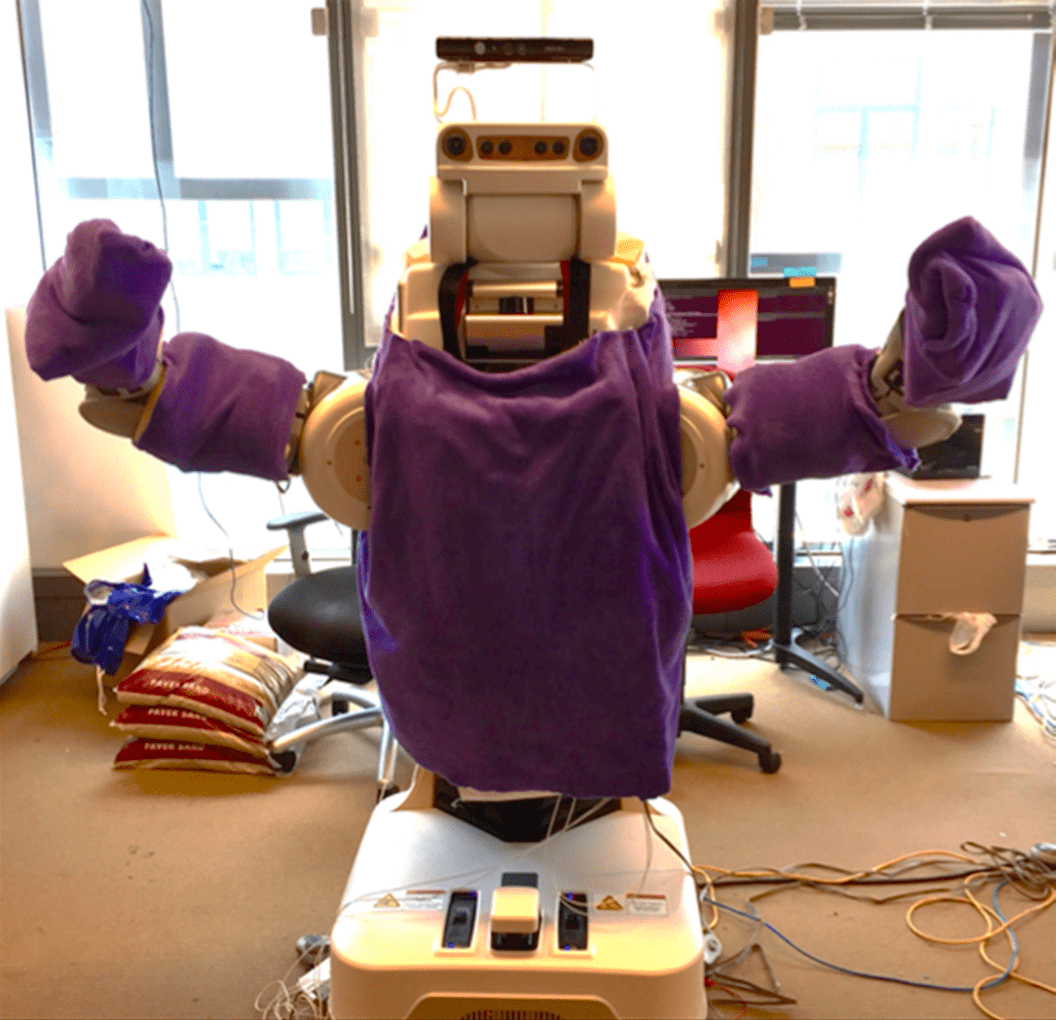
Soon, Bullock discovered that they thought too simply.
People are particularly sensitive to the beginning and end of a hug. Especially once the user indicates that they are ready to be released, release immediately; release too early or too late, and the user will be unhappy.
In other words, this tactile sensor is not enough at present. So, they began to develop HuggieBot 2.0 - the industry's first smart device that uses visual and tactile perception at the same time to provide hugs.
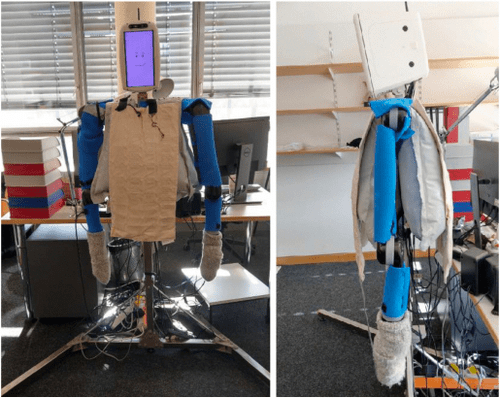
It has a V-shaped base on the lower part, which makes it easier for users to get closer and hug it. There is also a custom-made sensing system in its body called HiggieChest, which contains an air pressure sensor and a microphone amplifier.
Simply put,
This can quickly transmit the user's hugging touch to the whole body of the robot, which makes it easier to react quickly.
At the same time, in order to allow the robot to adjust its movements according to different human body types and to prevent its metal arms from being injured by users who come to hug them,the robot arms are set to be very sensitive and interesting.
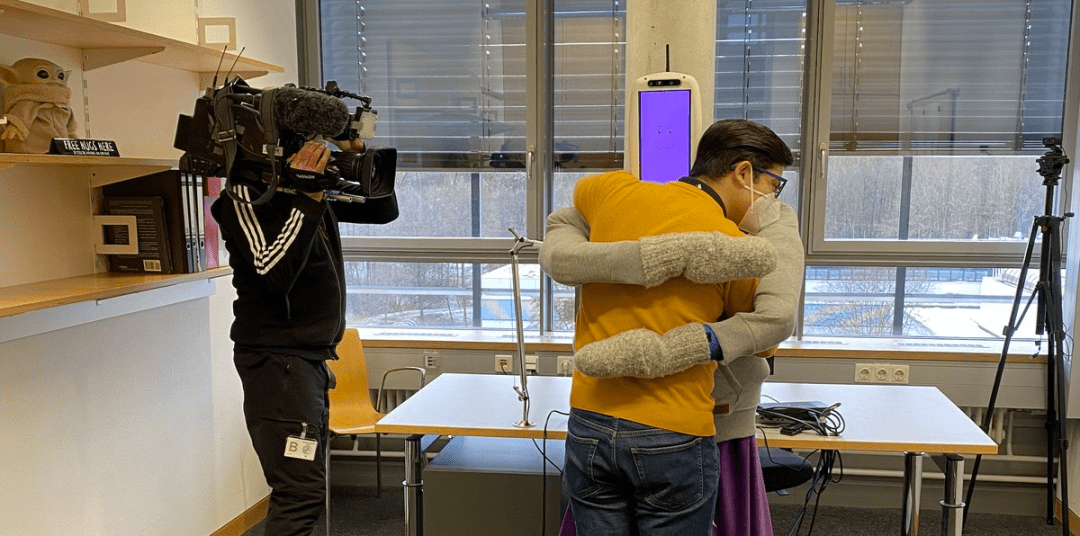
More than just hugs, people are beginning to expect more from robots
Bullock collected a total of 512 hug data from 32 users in the experiment, and discovered an interesting phenomenon.
In order to ensure the accuracy of data collection, the research team specifically instructed the subjects to only perform one action in a single hug, such as stroking, squeezing, etc.
But through the laboratory video, they found that 7 of the 32 participants unconsciously combined various gestures. Some people combined rubbing and tapping, and some people after hugging the robot tightly He let go a little and patted the robot's shoulder lightly.
It seems that in addition to simple hugs, people are gradually projecting more emotional expectations on robots.
In user feedback, Bullock was also surprised to find : Compared with the "perfect hug angle and process" set by the program, users actually prefer the robot to make "improvised" responses based on their movements.
78.13% of the participants said that this kind of response would make them feel that the robot was more energetic and real, and that they would feel understood by the other party. Although the current motion feedback is complete, it is too mechanical and does not make people feel the same emotional investment in robots and humans.
So, in the latest version - HuggieBot 3.0, the team has set up the ability for the robot to provide "passive response" and "active response".
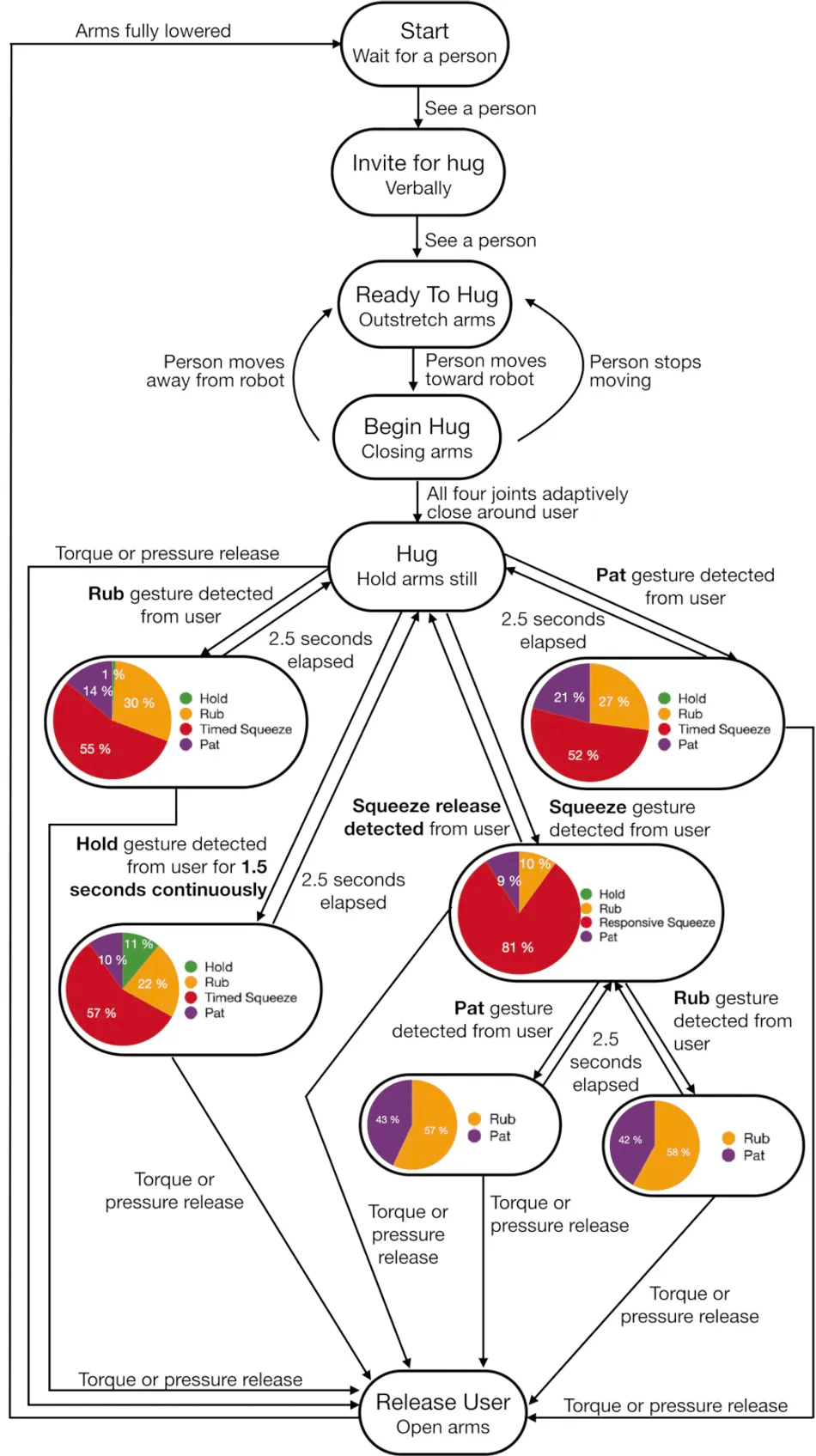
Simply put, if the robot detects that the user is patting, squeezing, or rubbing in addition to maintaining a hugging posture, the robot will respond differently based on probability to give feedback.
The robot can patiently repeat these gestures, either all at once or multiple times in a row. Isn’t this much better than many real people?
But if people just hug each other for a long time without doing any other actions, the robot will trigger an "active response", with an interval of about 1.5 seconds.
So, hugging seems simple, but it is difficult to let go. Interaction also needs to be controlled well.
So far, the Bullock team has summarized a set of "embracing gold standards" through quantitative research over the years:
- Soft;
- With temperature;
- The body size is similar to that of an adult;
- It is necessary to sensitively detect the approaching person, make an invitation action, and the hug action should be synchronized with the person;
- Actively adjust the position of your arms to make the person being hugged feel comfortable;
- Quickly sense what other wishes the other party has released during the hug;
- Perceive the gestures during the hug;
- Respond quickly to these gestures;
- Each response needs to be slightly different;
- During the hugging process, occasionally you need to take the initiative and make some gestures to express concern.
Ask yourself, Have you done this when you hug someone?
Currently, the Bullock team is working intensively to develop the fourth generation of hugging robots. Even if you cannot buy a robot to heal yourself at the moment, you can learn to use it first.
Looking at it this way, sincerity is always a must-win. We don’t need a “perfect hug”, what we need is a “sincere hug”.
An Easter Egg
In order to prevent some users from getting too involved and using too much force, the scientists also gave the robot a new torso:
By heat sealing along the edges and then using HH-66 vinyl cement on top of the heat seal, it is stronger and more pressure resistant.
Because someone held me too tightly before, the robot leaked air!
references
[2] Can Robots Give Good Hugs? | Hackaday https://hackaday.com/2022/01/24/can-robots-give-good-hugs/
[3] HuggieBot 3.0 – Robot Uses Science to Deliver the Perfect Hug https://www.odditycentral.com/technology/huggiebot-3-0-robot-uses-science-to-deliver-the-perfect-hug .html
Author: Lilyann
Editor:biu
Unless otherwise stated, the pictures are from reference [1] and the video screenshot attached to it
If necessary, please contact sns@guokr.com
The above is the detailed content of When no real person can give you a heartfelt hug, the robot will take action. For more information, please follow other related articles on the PHP Chinese website!

Hot AI Tools

Undresser.AI Undress
AI-powered app for creating realistic nude photos

AI Clothes Remover
Online AI tool for removing clothes from photos.

Undress AI Tool
Undress images for free

Clothoff.io
AI clothes remover

AI Hentai Generator
Generate AI Hentai for free.

Hot Article

Hot Tools

Notepad++7.3.1
Easy-to-use and free code editor

SublimeText3 Chinese version
Chinese version, very easy to use

Zend Studio 13.0.1
Powerful PHP integrated development environment

Dreamweaver CS6
Visual web development tools

SublimeText3 Mac version
God-level code editing software (SublimeText3)

Hot Topics
 1385
1385
 52
52
 How can AI make robots more autonomous and adaptable?
Jun 03, 2024 pm 07:18 PM
How can AI make robots more autonomous and adaptable?
Jun 03, 2024 pm 07:18 PM
In the field of industrial automation technology, there are two recent hot spots that are difficult to ignore: artificial intelligence (AI) and Nvidia. Don’t change the meaning of the original content, fine-tune the content, rewrite the content, don’t continue: “Not only that, the two are closely related, because Nvidia is expanding beyond just its original graphics processing units (GPUs). The technology extends to the field of digital twins and is closely connected to emerging AI technologies. "Recently, NVIDIA has reached cooperation with many industrial companies, including leading industrial automation companies such as Aveva, Rockwell Automation, Siemens and Schneider Electric, as well as Teradyne Robotics and its MiR and Universal Robots companies. Recently,Nvidiahascoll
 Cloud Whale Xiaoyao 001 sweeping and mopping robot has a 'brain'! | Experience
Apr 26, 2024 pm 04:22 PM
Cloud Whale Xiaoyao 001 sweeping and mopping robot has a 'brain'! | Experience
Apr 26, 2024 pm 04:22 PM
Sweeping and mopping robots are one of the most popular smart home appliances among consumers in recent years. The convenience of operation it brings, or even the need for no operation, allows lazy people to free their hands, allowing consumers to "liberate" from daily housework and spend more time on the things they like. Improved quality of life in disguised form. Riding on this craze, almost all home appliance brands on the market are making their own sweeping and mopping robots, making the entire sweeping and mopping robot market very lively. However, the rapid expansion of the market will inevitably bring about a hidden danger: many manufacturers will use the tactics of sea of machines to quickly occupy more market share, resulting in many new products without any upgrade points. It is also said that they are "matryoshka" models. Not an exaggeration. However, not all sweeping and mopping robots are
 Remove duplicate values from PHP array using regular expressions
Apr 26, 2024 pm 04:33 PM
Remove duplicate values from PHP array using regular expressions
Apr 26, 2024 pm 04:33 PM
How to remove duplicate values from PHP array using regular expressions: Use regular expression /(.*)(.+)/i to match and replace duplicates. Iterate through the array elements and check for matches using preg_match. If it matches, skip the value; otherwise, add it to a new array with no duplicate values.
 Supports Chinese dialogue! New NVIDIA ChatRTX updated
Jun 09, 2024 am 11:25 AM
Supports Chinese dialogue! New NVIDIA ChatRTX updated
Jun 09, 2024 am 11:25 AM
As early as February, NVIDIA launched the LLM-based chatbot ChatwithRTX. In May, the chatbot was updated, adding new models and new functions, the packaging package was also reduced from 35G to 11G, and the software was officially renamed ChatRTX. In the previous article and video about ChatwithRTX, we mentioned that ChatwithRTX does not have its own Chinese reply. If you want to implement Chinese answers, you need to install your own environment, large language models, etc. But this step has a relatively high threshold for users, and they have to go through many complicated steps to achieve Chinese question and answer. Before the introduction, let’s briefly talk about what ChatRTX is.
 The Humanoid Robot Research Institute of China University of Science and Technology was unveiled and announced the establishment of the Yangtze River Delta Humanoid Robot Alliance
Jun 19, 2024 pm 12:59 PM
The Humanoid Robot Research Institute of China University of Science and Technology was unveiled and announced the establishment of the Yangtze River Delta Humanoid Robot Alliance
Jun 19, 2024 pm 12:59 PM
This site reported on June 18 that this morning, the University of Science and Technology of China’s Artificial Intelligence and Humanoid Robot Frontier Forum was held in the school’s high-tech park. The School of Artificial Intelligence and Data Science and the Humanoid Robot Research Institute of the University of Science and Technology of China were unveiled one after another. Ding Han, an academician of the Chinese Academy of Sciences, was appointed as the director of the Science and Technology Committee of the Humanoid Robot Research Institute, and announced the establishment of the Yangtze River Delta Humanoid Robot Alliance. The Research Institute of Humanoid Robots of USTC is committed to leveraging the multi-disciplinary advantages of USTC and striving for technological breakthroughs in the directions of material sensing, structural actuation, motion control and embodied intelligence to promote the development of USTC in the field of intelligent robots. The institute will actively promote the application of humanoid robots in service, medical, education and other fields based on technological innovation, and will work with
 Real-life version of WALL-E, Disney demonstrates new bipedal robot: able to navigate complex terrain such as slopes/steps
Jul 20, 2024 pm 06:31 PM
Real-life version of WALL-E, Disney demonstrates new bipedal robot: able to navigate complex terrain such as slopes/steps
Jul 20, 2024 pm 06:31 PM
This website reported on July 20 that the Disney research team designed and produced a new bipedal robot that can traverse unstructured terrain such as slopes and steps in the theme park. Note on this site: The video source is Disney, uploaded to Station B by Turkey Brothers. Disney hopes that through this bipedal robot project, it combines procedural animation, modular hardware and reinforcement learning to design and program a robot that can make these unique gaits and movements. Characteristic walking character. This bipedal robot is somewhat similar to Wall-E, the protagonist in the 2008 movie "Wall-E," except that it has a flat head and a boxy body. Image source: WikiMedia Disney stated that the design focus of the project is on character-driven mechanical properties, proposing a control architecture based on reinforcement learning to perform robustly
 What is programming for and what is the use of learning it?
Apr 28, 2024 pm 01:34 PM
What is programming for and what is the use of learning it?
Apr 28, 2024 pm 01:34 PM
1. Programming can be used to develop various software and applications, including websites, mobile applications, games, and data analysis tools. Its application fields are very wide, covering almost all industries, including scientific research, health care, finance, education, entertainment, etc. 2. Learning programming can help us improve our problem-solving skills and logical thinking skills. During programming, we need to analyze and understand problems, find solutions, and translate them into code. This way of thinking can cultivate our analytical and abstract abilities and improve our ability to solve practical problems.
 Collection of C++ programming puzzles: stimulate thinking and improve programming skills
Jun 01, 2024 pm 10:26 PM
Collection of C++ programming puzzles: stimulate thinking and improve programming skills
Jun 01, 2024 pm 10:26 PM
C++ programming puzzles cover algorithm and data structure concepts such as Fibonacci sequence, factorial, Hamming distance, maximum and minimum values of arrays, etc. By solving these puzzles, you can consolidate C++ knowledge and improve algorithm understanding and programming skills.



